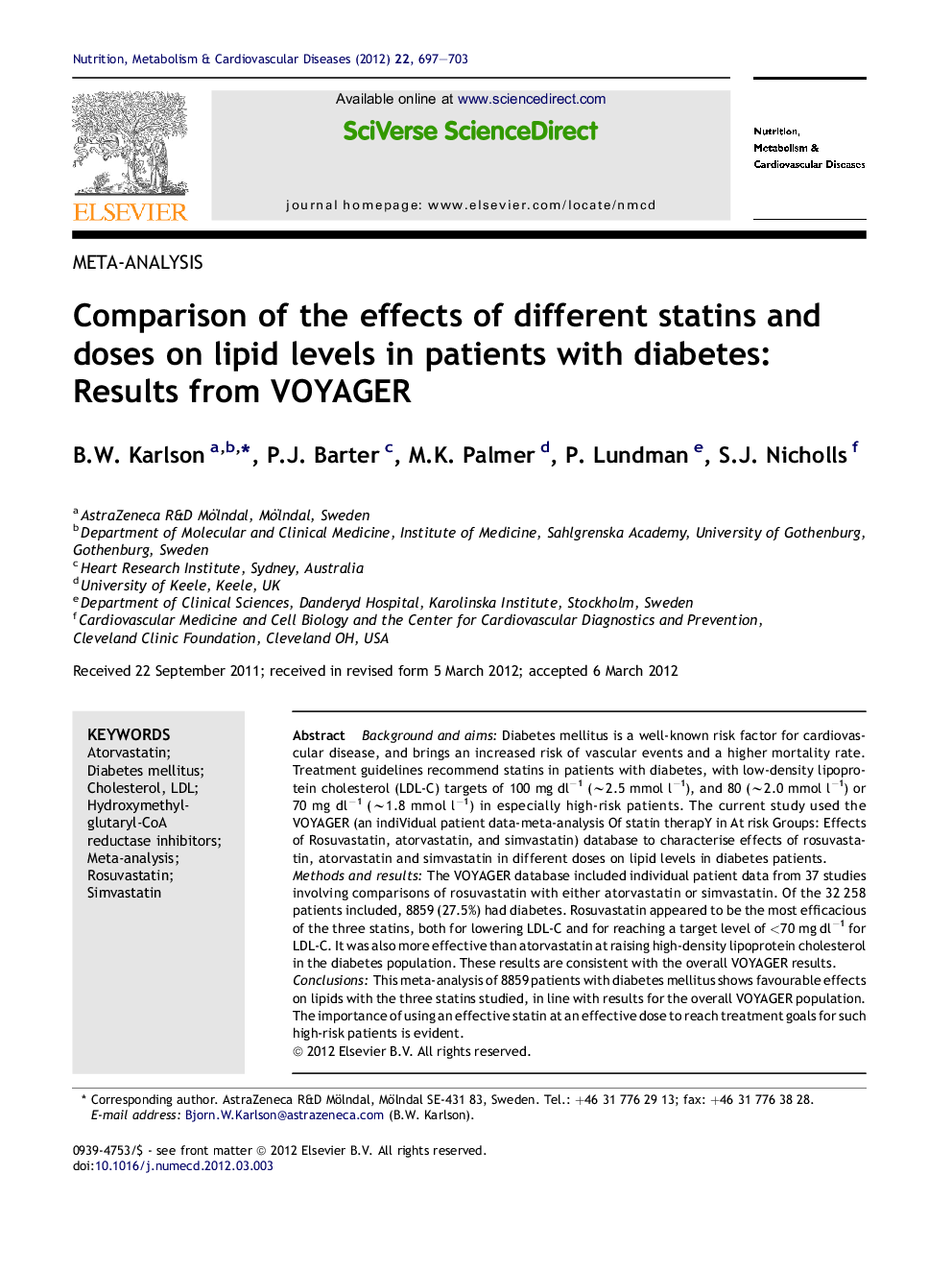| Article ID | Journal | Published Year | Pages | File Type |
|---|---|---|---|---|
| 3002454 | Nutrition, Metabolism and Cardiovascular Diseases | 2012 | 7 Pages |
Background and aimsDiabetes mellitus is a well-known risk factor for cardiovascular disease, and brings an increased risk of vascular events and a higher mortality rate. Treatment guidelines recommend statins in patients with diabetes, with low-density lipoprotein cholesterol (LDL-C) targets of 100 mg dl−1 (∼2.5 mmol l−1), and 80 (∼2.0 mmol l−1) or 70 mg dl−1 (∼1.8 mmol l−1) in especially high-risk patients. The current study used the VOYAGER (an indiVidual patient data-meta-analysis Of statin therapY in At risk Groups: Effects of Rosuvastatin, atorvastatin, and simvastatin) database to characterise effects of rosuvastatin, atorvastatin and simvastatin in different doses on lipid levels in diabetes patients.Methods and resultsThe VOYAGER database included individual patient data from 37 studies involving comparisons of rosuvastatin with either atorvastatin or simvastatin. Of the 32 258 patients included, 8859 (27.5%) had diabetes. Rosuvastatin appeared to be the most efficacious of the three statins, both for lowering LDL-C and for reaching a target level of <70 mg dl−1 for LDL-C. It was also more effective than atorvastatin at raising high-density lipoprotein cholesterol in the diabetes population. These results are consistent with the overall VOYAGER results.ConclusionsThis meta-analysis of 8859 patients with diabetes mellitus shows favourable effects on lipids with the three statins studied, in line with results for the overall VOYAGER population. The importance of using an effective statin at an effective dose to reach treatment goals for such high-risk patients is evident.
